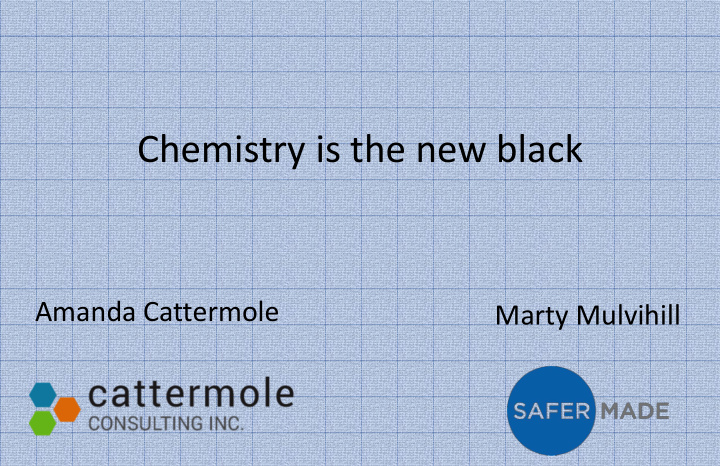



Chemistry is the new black Amanda Cattermole Marty Mulvihill
CHEMISTRY IN THE TEXTILE SUPPLY CHAIN Source: C&E News
PAGE 3 HAZARDOUS CHEMICALS IN TEXTILES Manufacturing textiles from fiber to finished fabric is a long process that uses lots of chemicals and water resulting in polluted waterways and exposure to workers and their communities. Greenpeace has identified 11 classes of hazardous chemicals – but there are many more • Alkyl Phenols used in detergents • Phthalates used in printing • Halogenated flame retardants • SOME azo dyes • Organotin compounds – biocides, catalysts in plastic and glue production and polyurethane products • Perfluorinated chemicals for stain and water repellency • Chlorobenzenes – dye carriers for polyester and solvents, degreasing skins • Chlorinated solvents – used for cleaning and dissolving fats, oils and adhesives • Chlorophenols – preservatives and pesticides • Short chain paraffins • Heavy metals – many uses CONFIDENTIAL
BRAND RESPONSES TO CHEMICALS OF CONCERN Preferred Awareness and Restricted substance Product and brand substances and Transparency lists redesign chemical screening
HOW WE MET
Challenge: PAGE 6 To develop fabric finishing technologies that avoid the use of hazardous chemicals. NATURAL CROSSLINKING CONFIDENTIAL
PAGE 7 TRENDS IN THE INDUSTRY • COLLABORATION • AFIRM, ZDHC, OIA • TRANSPARENCY • Products • Supply chains • Chemicals • CIRCULAR BUSINESS MODELS • Take-back • Repurposing • Zero waste • GREATER INVESTMENT IN INNOVATION INCLUDING GREEN CHEMISTRY • Fashion for Good • Levi’s Collaboratory • H&M Global Change Award • Patagonia Tin Shed CONFIDENTIAL
SAFER CHEMISTRY INNOVATION AREAS IN TEXTILE, APPAREL, AND FOOTWEAR Supply Chain Waterless Information New Safer Fiber Recycling New Materials Processing Management Chemistries Systems Chemicals Cotton Sustainable Synthetic Fibers Waterless Dyeing Management Finishing Processes Information Chemistries Systems Polyester Cellulosic Fibers Waterless Bio Based Dyes Finishing Traceability Processes Nylon Systems Leather Alternatives Blends
PAGE 9 LESSONS LEARNED-WHAT WORKED How do you successfully collaborate between industry and the university? • Good chemistry is a benefit – we like each other! • Information exchange is the basis for lasting relationships • Be humble, be patient, be open to new opportunities • Start small-Lecturing, Greener Solutions, Consulting (student-participation desirable) • Students are the Universities most valuable asset • Engage multiple industries and funders to support on- going projects (don’t expect a golden ticket) • Share, Share, Share, Try to structure relationships and consulting products so that the results can be in the public domain • Funding opportunities • We have both come so far ….. CONFIDENTIAL
Recommend
More recommend